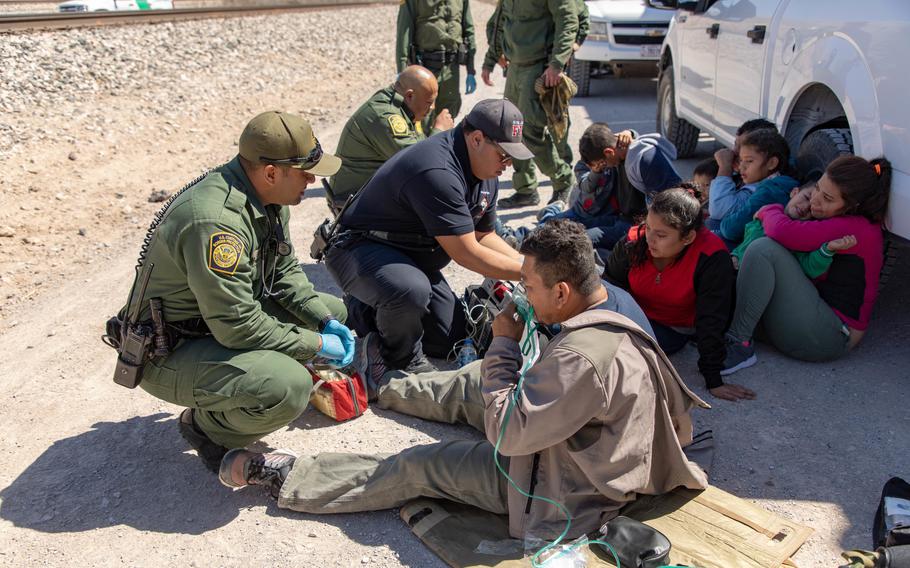
U.S. Border Patrol agents render medical aid to migrants traveling with a group that crossed the border near Sunland Park, N.M., on March 19, 2019. Earlier this month, the Department of Homeland Security released new data on the effort to unite separated children with their parents. Nearly a thousand remain separated, with hundreds not even in the process of reunification. (Mani Albrecht/U.S. Customs and Border Protection)
Over three months in 2018, more than 2,600 children were separated from their parents after arriving at the U.S.-Mexico border. These separations were a function of an explicit Trump administration policy, aimed at curtailing migration to the United States by punishing those who came. If coming to the United States meant potentially being separated from your child, the idea went, perhaps fewer people would come.
There weren't many times that President Donald Trump backed down on controversial policies, but this was one. He signed an executive order limiting the policy soon after it began, in the face of broad public outcry. But until the riot by his supporters at the Capitol on Jan. 6, 2021, his administration's child-separation policy was perhaps its most notorious feature.
The effects of that policy linger. Earlier this month, the Department of Homeland Security released new data on the effort to unite those separated children with their parents. Nearly a thousand remain separated, with hundreds not even in the process of reunification.
The DHS numbers include every child separated from a parent from the day Trump was inaugurated until the day he left office. That's more than 3,900 children in total. Just over 2,900 of them have been reunified with family, with more than 300 either in the process of reunifying or whose family have been contacted about beginning the process.
The reunification process has not begun for some 660 children. (The exact figure isn't clear. DHS numbers indicate that 183 families have been contacted about reunification, but that could include multiple children.) The government established a website, Together.gov, providing information on reunification. According to DHS, about 2,000 families have been referred through the process at that site.
The Department of Health and Human Services provides regular updates to Congress about family separations, including an ongoing tally of the number of children separated from their parents each month. Those separations do still occur, though not for punitive reasons. In September 2022, for example, four children were separated from their parents. Two were taken from their parents because the parents had a criminal history. One was taken out of concern about parental fitness. The fourth was taken for a reason identified only as "other."
Since President Biden took office, the most children separated from their parents in a given month was 63, as of the end of fiscal year 2021. That same month, there were more than 87,000 members of families stopped at the border. In the month with the most separations under Trump, 1,510 children were taken from family when fewer than 9,500 members of families were stopped at the border.
Most of the children separated from their parents since April 2018 (the month Trump's "zero tolerance" policy went into effect and the month in which the HHS data begin) were age 5 and older, though under Biden the majority have been younger than 5. In 2018, though, the ACLU determined that about 2 in 5 children known to have been separated from their parents at that time were age 10 or younger. It's safe to assume that some of those children taken from their parents five years ago remain separated from their families. Some may have spent more of their lives away from their families than with them.
Often, the parents were removed from the country while the children were allowed to remain. Parents who participate in the reunification program are given visas allowing them to travel to the United States for the period of months during which reunification is completed. They are allowed to stay in the U.S. — and to work legally — for three years.
After that, though, there's no guarantee that they'll be allowed to remain.